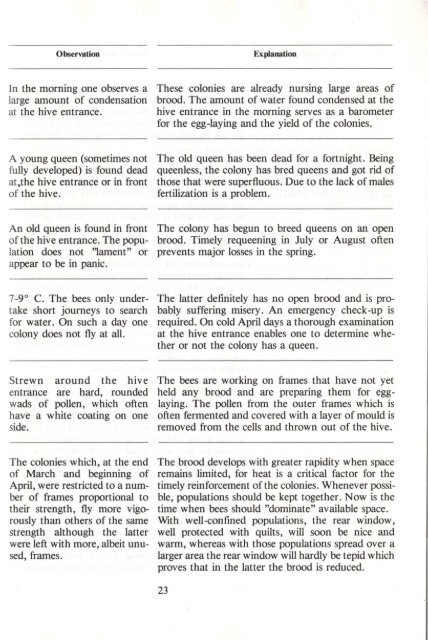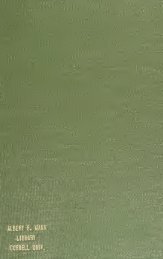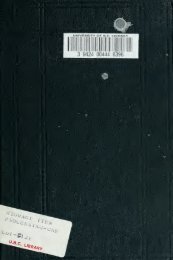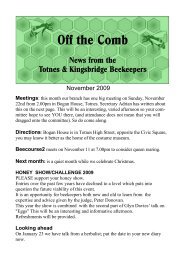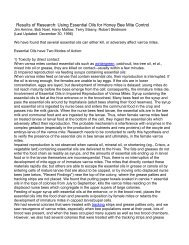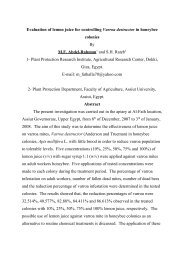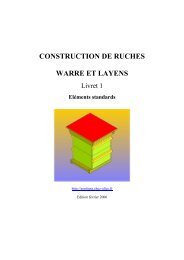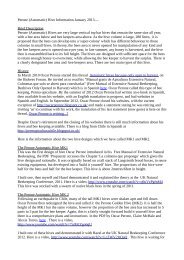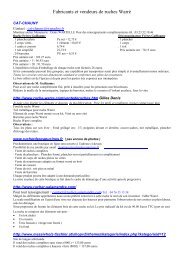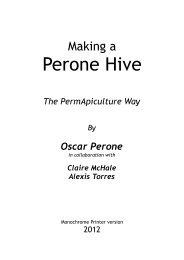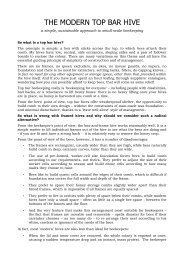You also want an ePaper? Increase the reach of your titles
YUMPU automatically turns print PDFs into web optimized ePapers that Google loves.
Observation<br />
Explanation<br />
In <strong>the</strong> morning one observes a These colonies are already nursing large areas of<br />
large amount of condensation brood. The amount of water found condensed at <strong>the</strong><br />
at <strong>the</strong> hive entrance.<br />
hive entrance in <strong>the</strong> morning serves as a barometer<br />
for <strong>the</strong> egg-laying and <strong>the</strong> yield of <strong>the</strong> colonies.<br />
A young queen (sometimes not<br />
fully developed) is found dead<br />
at.<strong>the</strong> hive entrance or in front<br />
of <strong>the</strong> hive.<br />
The old queen has been dead for a fortnight. Being<br />
queenless, <strong>the</strong> colony has bred queens and got rid of<br />
those that were superfluous. Due to <strong>the</strong> lack of males<br />
fertilization is a problem.<br />
An old queen is found in front The colony has begun to breed queens on an open<br />
of <strong>the</strong> hive entrance. The popu- brood. Timely requeening in July or August often<br />
lation does not ''lament'' or prevents major losses in <strong>the</strong> spring.<br />
appear to be in panic.<br />
7-9° C. The bees only undertake<br />
short journeys to search<br />
for water. On such a day one<br />
colony does not fly at all.<br />
The latter definitely has no open brood and is probably<br />
suffering misery. An emergency check-up is<br />
required. On cold April days a thorough examination<br />
at <strong>the</strong> hive entrance enables one to determine whe<strong>the</strong>r<br />
or not <strong>the</strong> colony has a queen.<br />
Strewn around <strong>the</strong> hive<br />
entrance are hard, rounded<br />
wads of pollen, which often<br />
have a white coating on one<br />
side.<br />
The bees are working on frames that have not yet<br />
held any brood and are preparing <strong>the</strong>m for egglaying.<br />
The pollen from <strong>the</strong> outer frames which is<br />
often fermented and covered with a layer of mould is<br />
removed from <strong>the</strong> cells and thrown out of <strong>the</strong> hive.<br />
The colonies which, at <strong>the</strong> end<br />
of March and beginning of<br />
April, were restricted to a number<br />
of frames proportional to<br />
<strong>the</strong>ir strength, fly more vigorously<br />
than o<strong>the</strong>rs of <strong>the</strong> same<br />
strength although <strong>the</strong> latter<br />
were left with more, albeit unused,<br />
frames .<br />
The brood develops with greater rapidity when space<br />
remains limited, for heat is a critical factor for <strong>the</strong><br />
timely reinforcement of <strong>the</strong> colonies. Whenever possible,<br />
populations should be kept toge<strong>the</strong>r. Now is <strong>the</strong><br />
time when bees should "dominate" available space.<br />
With well-confined populations, <strong>the</strong> rear window,<br />
well protected with quilts, will soon be nice and<br />
warm, whereas with those populations spread over a<br />
larger area <strong>the</strong> rear window will hardly be tepid which<br />
proves that in <strong>the</strong> latter <strong>the</strong> brood is reduced.<br />
23


